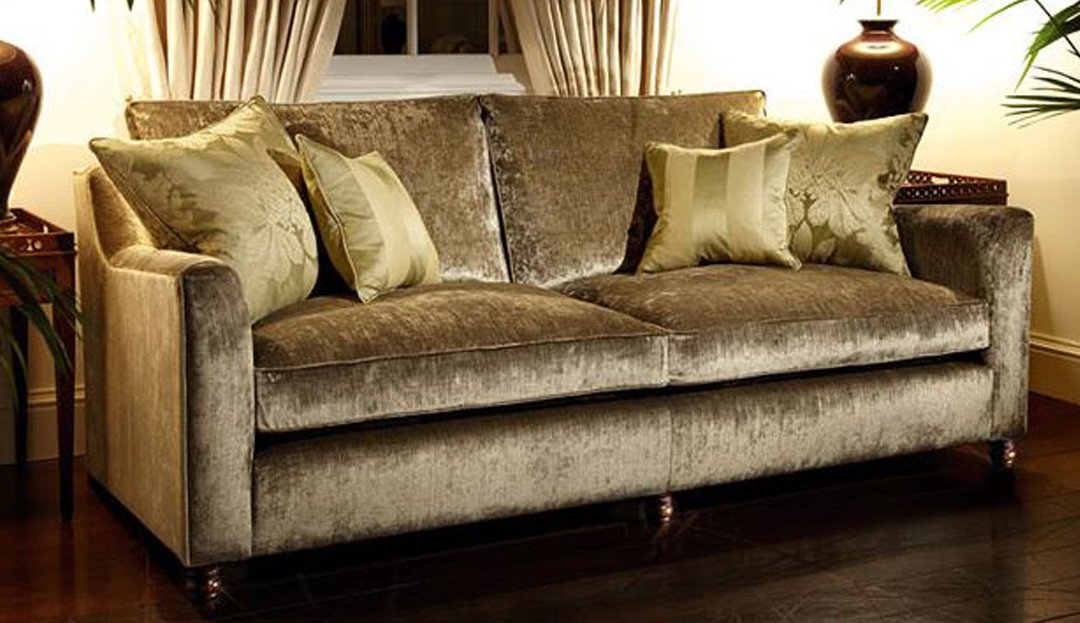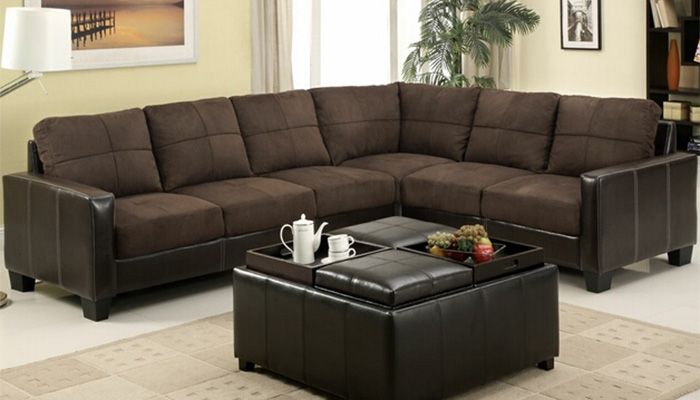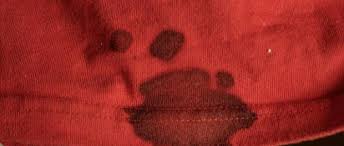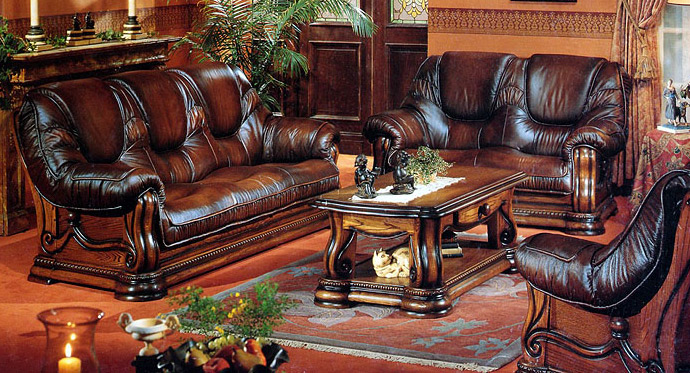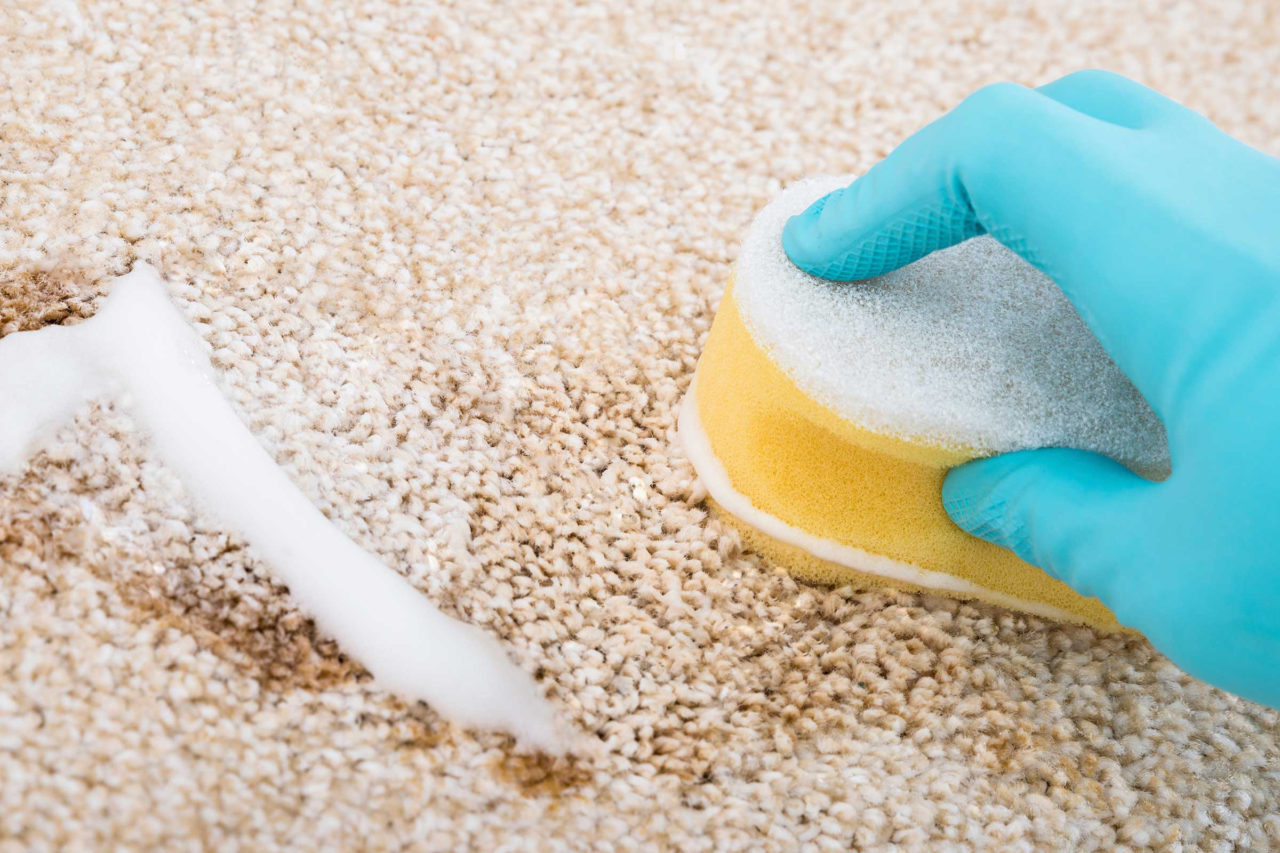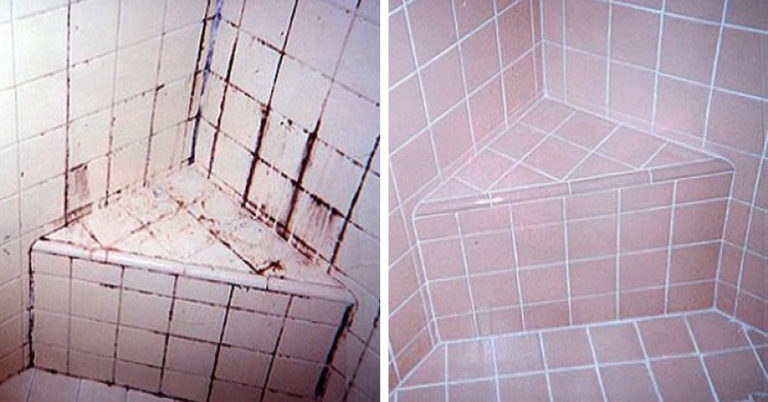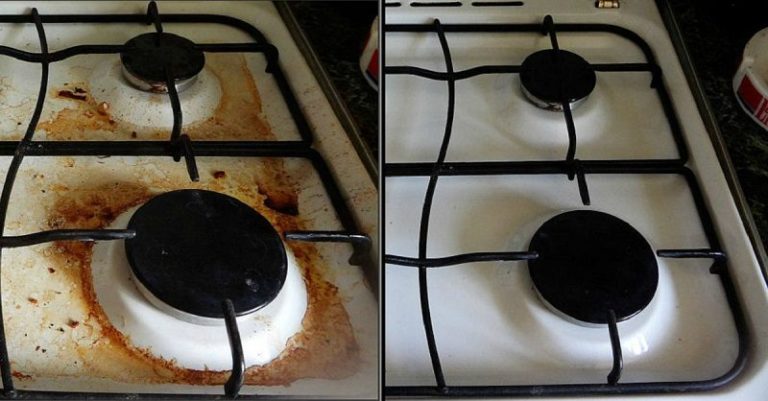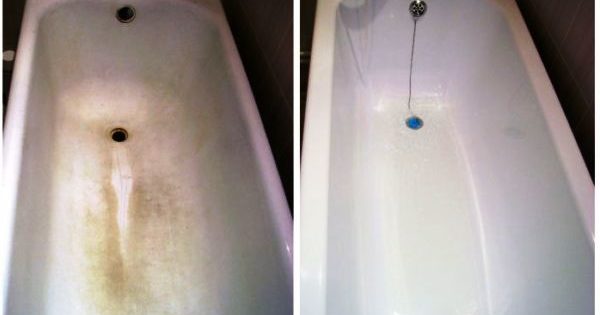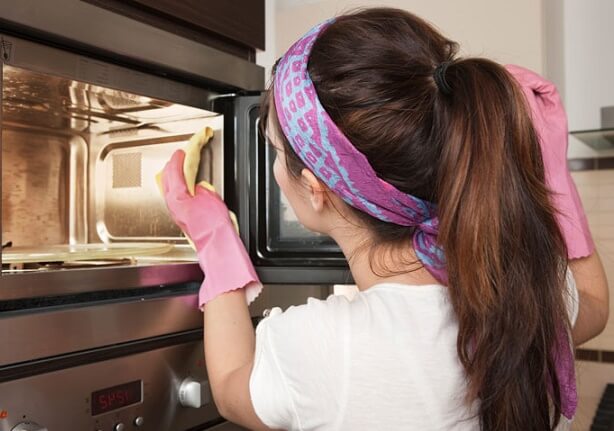16 Ways to Clean Upholstered Furniture at Home
It is impossible to imagine a cozy house without upholstered furniture. That it allows you to get a feeling of warmth, comfort and well-being. But improper care, stains and dust can make it dull and unattractive. Really, sofas, armchairs, poufs and other representatives of upholstered furniture require more attention and care, since pollution can be absorbed into the filler, where it is quite difficult to get it out. also in filler unwanted microorganisms may appear, mold and even small insects, which cannot be immediately detected, but getting rid of them is very difficult. Therefore, it is necessary to care for upholstered furniture, monitor its cleanliness and follow all recommendations for caring for it. We have put together the most effective ways to clean upholstered furniture at home.

In fact, in order to clean upholstered furniture efficiently, it is not necessary to use dry cleaning services. Enough a large number of stains can be removed at home using improvised means. But in order to remove contamination and not spoil the upholstery, it is necessary to take into account the degree and nature of contamination, as well as the type of upholstery. After that, select the appropriate cleaning agent and cleaning method, and get to work!
Basic recommendations for cleaning upholstered furniture
In fact, there are some rules that can help protect your furniture from damage during cleaning:
- before using any cleaning agent, test it his on an invisible surface upholstery;
- Before starting to clean upholstered furniture, cover the floor and surrounding furniture with polyethylene, newspapers or a cloth;
- for eachupholstery exist their norms and regulations treatment. Check out and stick to them when carrying out cleaning. So, for each type of upholstery, its own cleaning agent and equipment are recommended. For example, special rubber brushes are used to clean suede surfaces; skin, flock and velor are cleaned with microfiber cloths; for other materials foam sponges and soft brushes are excellent. Failure to comply with recommendations of this kind can ruin furniture upholstery;
- Before wet cleaning, vacuum the surface of the furniture to remove fine debris and dust;
- to clean light furnitureuse only light rags and brushes. Colored fabric can shed on furniture and ruin it;
- in no case you can not use any bleaching agents and undiluted vinegar!
- sofas and armchairs begin to be cleaned from above: first the back, then the armrests, seats and at the very end the lower part of the furniture;
- at the end of the cleaning process, you can re-vacuum it to dry it a bit and remove any remaining cleaning agents.
Cleaning methods for upholstered furniture are directly dependent on the upholstery. Each type of upholstery is unique and care must match it. Before cleaning, be sure to read the recommendations for your furniture cover and adhere to these requirements.
Upholstery type and cleaning nuances
Each upholstery material requires an individual approach:
- before cleaningvelor furniture, to remove dust from the surface, wipe with a dry cloth. In no case should you use a vacuum cleaner for these purposes! It can damage the pile, and the fabric will lose its former appearance. After removing the dust, moisten a microfiber cloth in soapy water and gently, without pressing the villi, wipe the furniture in the direction of the pile. Then wipe again with a dry cloth to remove the suds and dry. Complex stains from these surfaces are best removed in dry cleaning so as not to damage the upholstery;

- products from natural or artificial skin wipe with a damp cloth, then dry thoroughly. If there are complex spots, they are easily removed with an alcohol solution or vodka. After cleaning, leather furniture polished with a special tool for leather furniture. The polish gently cares for the surface, gives it the necessary gloss and protects against some contaminants. From folk remedies for skin and leatherette, beaten egg white or milk is used in order to hide scuffs. The stain of wine on such furniture is easily removed with a damp cloth. Ink is easily removed with ethyl alcohol or hairspray;

- cleaning furniture fromnatural suede and nubuck they are produced only with special tools for these materials and soft brushes, so as not to damage the surface. Stains of fat can be removed with an ordinary stationery eraser or alcohol solution (1 part water to 1 part alcohol). At the end of the work, restore the pile with a special rubber brush and treat with a dirt-repellent agent;

- the most common upholstery for furniture - flock and chenille. They are very practical and pleasant to the touch. They are perfectly cleaned even by improvised means, but we must remember that an excess of moisture can ruin the material.

To quickly remove a stain on upholstered furniture, it is not necessary to use expensive universal detergents or immediately call a dry cleaner. Often there are enough improvised means. The main thing is to know what is necessary in this situation, because a remedy that helped to remove one spot can be completely useless in another situation. It is very important to apply it quickly on a fresh track, this will greatly facilitate the removal of pollution. In some cases, removing a dried stain without dry cleaning will not work. So, if possible, stains are recommended immediately after they appear.
Another rule for all kinds of stains - remove dirt from the edges to the center, so that they do not increase in size.
To combat stains, you need to arm yourself with the following items:
- detergent or soap;
- brush;
- sponge for dishes;
- rags of different sizes;
- napkin.
When everything is ready, you can begin to remove pollution. Consider the most common and ways to deal with them.
No. 1. Get rid of stains of fat
The most important thing when a greasy spot appears is to take measures to remove it in time. With such pollution there are several means, one of which will certainly be in any home. This is salt, chalk or talc. Take any of them and sprinkle the stain. Leave the powder in for a few minutes, then sweep away everything with a brush or sponge. This procedure must be repeated several times until the stain disappears completely.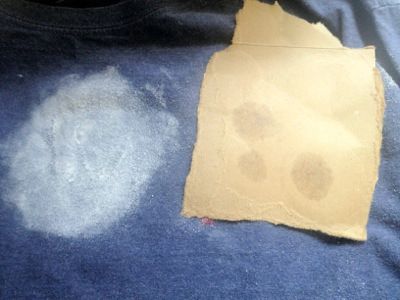
No. 2. We remove blood stains from upholstered furniture
Blood is a very persistent pollution. It is quite difficult to remove. If possible, it is necessary to do this while the stain is still fresh. It is very difficult to clean dried blood stains.If you encounter such pollution, try to get rid of it in several stages:
- If the stain is still fresh, you should put a damp cloth on it, soaked without fail in cold water, so that it absorbs blood. Let it lie for a few minutes, then dry the place with a dry cloth. Repeat this operation several times.
- If there is still a trace, spray on it from the spray bottle a saline solution (2 teaspoons of salt in 1 cup of water) and pat it with a dry cloth. Repeat these steps 3-5 times until the stain disappears.
- For dried spots It is recommended to use hydrogen peroxide. The cleaning method is the same as with water. Blot and listen until the blood is released from the furniture upholstery.
- You can find ammonia in the recommendations against blood stains. It can really remove the stain, but it can greatly damage the upholstery of the furniture, so we do not recommend this tool.

No. 3. We print traces of urine
The urine stain has a fetid odor, which is very difficult to remove. If it is absorbed into the filler, the task is complicated at times. Especially the urine of animals has a very pungent odor, which is difficult to get rid of, but you can try.
If the stain is fresh, blot it with a dry cloth or rag, and then follow this action plan:
- Apply vinegar solution (1: 3 concentration) to the stain. Leave it for a few hours.
- In order to get rid of excess moisture, sprinkle a spot of soda. It not only dries, but also absorbs the smell.
- Pour hydrogen peroxide over the contaminated area and then sprinkle with soda again.
- After complete drying, remove soda and vacuum.
If the animal’s urine stain is dry, clean up at home will not work. In this case, contact a specialist.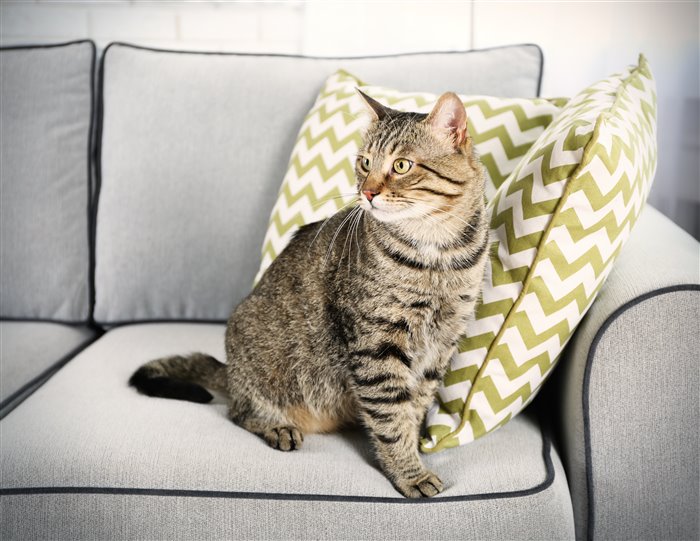
Number 4. Get rid of ink stains, felt-tip pens, lipstick, nail polish
Stains of this kind are easily removed with alcohol or acetone. Be sure to test these tools! To eliminate contamination, it is necessary to blot the stain with a cloth dampened in the solution. Keep in mind that the stain does not increase, it should never be tolerated. Remember that a rag or sponge must be changed as often as possible!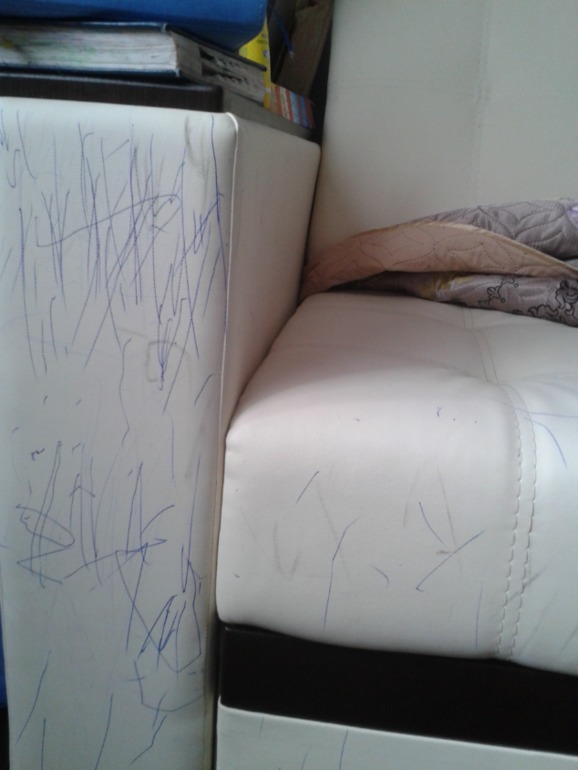
No. 5. Remove sticky gum
If chewing gum has stuck to the upholstered furniture, it can easily be scraped off with a knife if you previously freeze it. To do this, put ice wrapped in a plastic bag on it. If a trace remains after this operation, wipe it with acetone.
No. 6. Print traces of juice and fruits
The principle of removing fruit stains is the same as ink stains. They are removed by soaking it with an alcoholized cotton swab or cloth. As with ink, do not rub the stain so that it does not become even larger.
Number 7. Chocolate soiling
It is necessary to allow the film to form so that the stain does not smear along the skin, then carefully remove the top layer and wash the stain with soap and water.
Number 8. Remove wax and trace from it.
In order to easily remove the wax, give it time to harden and gently scrape it off. To remove the wax mark, cover it with a cloth or several paper towels, iron it.
No. 9. Bring out a stain of red wine
As soon as the red wine has spilled, blot the stain with a dry cloth and sprinkle with salt in order to remove moisture. You can repeat this procedure several times. Then treat the stain with ethanol and wash with soap suds. Then wash off the soap with water and dry the moisture with a dry cloth.
No. 10. Spilled tea, coffee
Stains of this kind are easily removed with ordinary soap. Lather the stain thoroughly and immediately blot it with a damp cloth so that no stains form. Then dry with a dry cloth. Repeat this procedure several times until the stain disappears.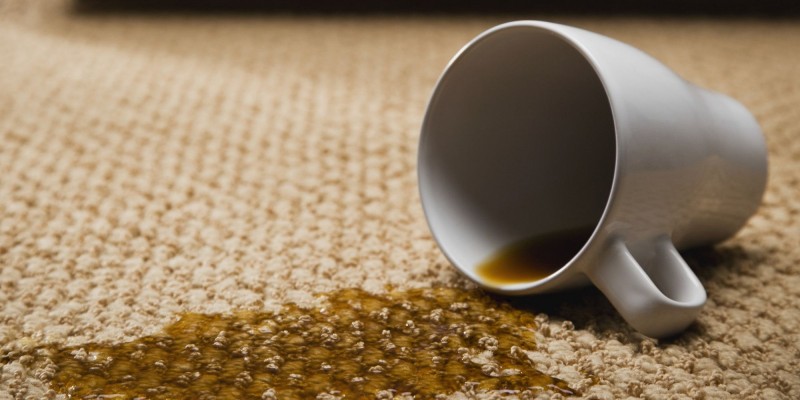
No. 11. We clean the greasy areas
During the operation of the furniture, it absorbs sebum, pet saliva, other minor impurities, and greasy spots are obtained. Coarse salt will help to cope with a small greasy speck. Sprinkle it on the desired area and wait until it absorbs the stain. If these contaminants are quite extensive, then there are several methods for different types of cladding:
- Leather furniture wipe glycerin. If white upholstery will help you a piece of chalkdiluted in water. Such a solution will help to cope with some other pollution.
- For fabric upholstery can be used:
- ammonia in half with water;
- surface finish foam the usual laundry soap;
- Especially contaminated places can be cleaned with a specially prepared solution: water, soda and laundry soap. Such a solution is applied to the surface and washed off with water.
Please note that these stains are removed from normal fabric cladding with cotton pads or cloth rags. If the surface is fleecy, it is worth using foam sponges or brushes with soft bristles.
No. 12. Get rid of dust
Cleaning upholstered furniture from dust should be carried out regularly. Upholstery very well absorbs all kinds of dust and in addition to the fact that when wet it can give stains, dust can cause various kinds of allergies. There are two ways to get rid of dust: either vacuum the furniture with a special nozzle, or knock it out with an ordinary plastic clapperboard. Please note that leather and suede furniture must not be knocked out.
Before knocking out dust with a cracker, moisten a sheet with water and spread it on furniture so that at the time of knocking out, the dust does not fly into the air, but settles on a damp cloth. If there is a lot of dust, you can carry out the procedure several times, but each time it is necessary to change the coating material to clean.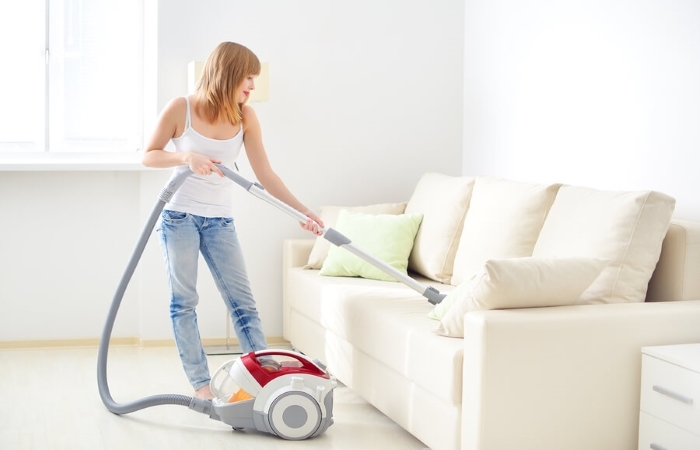
No. 13. We warn whitish stains on upholstered furniture
Such unpleasant stains appear due to improper care of furniture. To avoid them, you should rather adhere to the recommendations when carrying out cleaning:
- do not use too much water;
- choose the right detergents;
- wash soap thoroughly;
- Dry foam and moisture immediately with a dry cloth.
No. 14. Refresh the skin color
If the furniture has not been cleaned for a long time, stains and smudges form on its surface. You won’t be able to get rid of such contaminants with a usual anti-dust treatment, but there are several means to eliminate it:
- Soap solution (dissolve a mild soap in warm water).
- Shampoo solution (shampoo diluted in warm water).
- A solution of vinegar (1 tbsp.spoon of vinegar in 1 liter of water).
In order to refresh the color and give a little volume to the pile, it is necessary after cleaning to walk along the entire surface of the furniture with a medium hard brush.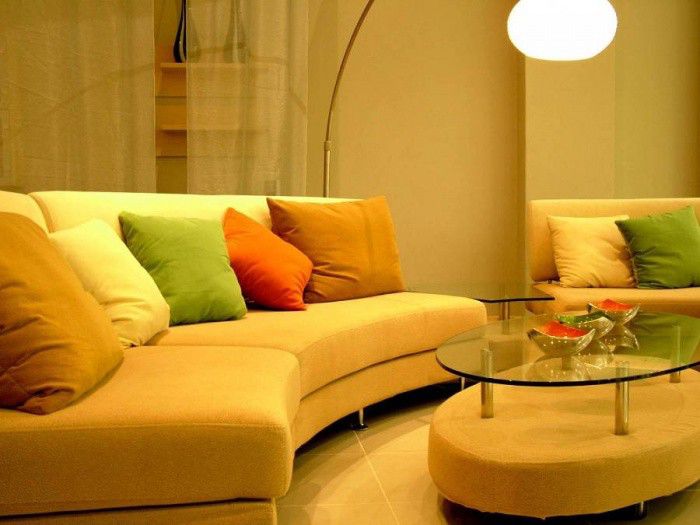
Number 15. We use a steam cleaner
Currently, progress has stepped forward, and a technique such as a steam cleaner and steamer has become available for widespread use. These devices are good in that steam penetrates deep into the filler and can clean it from the inside, in addition, it kills various bacteria, microorganisms and harmful insects. When cleaning with steam, the skin is updated, freshness and elasticity are returned to it.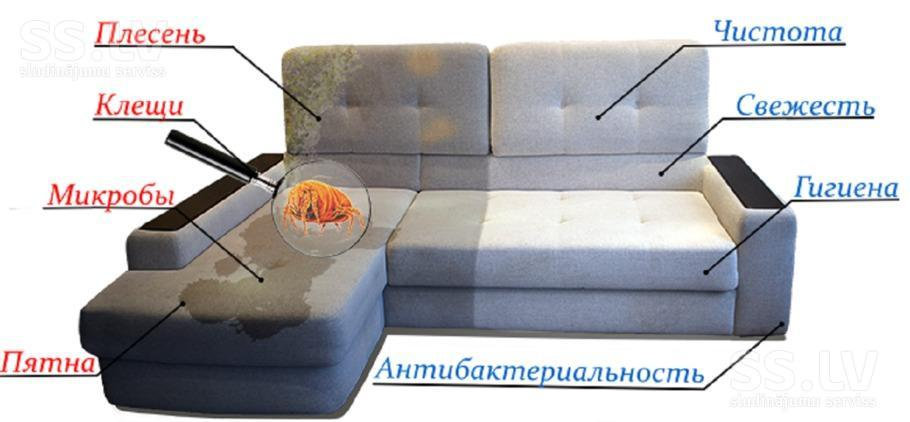
In order to carry out cleaning with a steamer or steam cleaner, you must first vacuum the furniture to remove crumbs and small debris, and then clean the entire surface with a steamer. In order not to damage the skin, do not stop for a long time on one fragment.
After this procedure, the furniture remains wet. Ventilate the room well to help her dry.
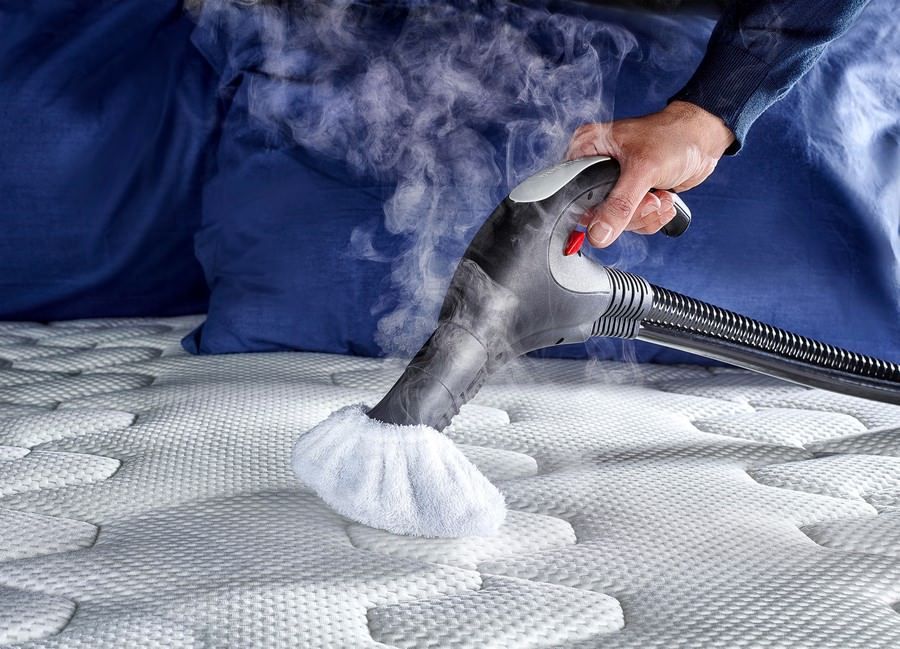
No. 16. Get rid of bad smell
To get rid of the unpleasant odor, there are special deodorizing sprays for upholstered furniture that impregnate the lining and preserve the fragrance for a long time, and shampoos for the same purpose. But if you do not have special chemistry, you can use the means at hand.For example, soak a weak solution of vinegar (2 tablespoons per 1 glass of water) with a cloth of the required size and cover it with furniture or a place of contamination. It is necessary that the skin absorb the solution. To do this, slightly press the material to the surface. After a few minutes, blot the area with a dry cloth or napkin and repeat the procedure again until the stench disappears. After 1 - 2 days, the smell of vinegar will disappear. But if you want to drown it out, add a few drops of a fabric softener with a pleasant smell to the solution.
There is another way to get rid of the bad smell: to completely fill up the entire sofa or chairs with soda. It absorbs the smell. In order to remove soda, vacuum the surface of the furniture upholstery.
You can try to kill the smell of animal urine with a solution of citric acid, but often only a professional dry cleaner can handle it.
Rules for the care of upholstered furniture
In order for furniture to serve you faithfully for many years, even when buying it, you need to pay attention to a number of nuances:
- if you have a small child, or you plan to have children in the near future, it is better not to give preference to furniture made of plush or velvet;
- if the house has pets (cats or dogs), then leather furniture is not for you. It is better to give preference to fabrics more dense and resistant to mechanical damage (such as matting, jacquard, chenille);
- A practical approach is also necessary when choosing furniture colors.
If it happens that your furniture does not match your lifestyle, you need to pay a little more attention to it so that it retains its original appearance and follows preventive measures that will greatly facilitate your task:
- Protect your furniture dust, crumbs, small debris, minor contamination and abrasion can covers. For a sofa and armchairs, these can be ordinary bedspreads. Currently, there are a huge variety of covers for every taste for any interior. It is much easier to wash the cover than once a week to carry out a full cleaning of upholstered furniture. In addition, replacing the cover can refresh the room and give a new mood.
- If you do not want to hide your furniture in a case, weekly carry out preventive cleaning:
- knock out or vacuum dust;
- remove pet hair regularly;
- wipe the surface of the furniture with a slightly damp cloth. Please note that the cloth should be wrung out well.

Caring for furniture with leather upholstery and fabric is slightly different. Consider their features.
Leather furniture care
At all times, leather furniture has been an indicator of presentability and style, and so that it does not lose its gloss over time, it needs a careful attitude and care. If leather furniture appeared in your home, be prepared for the fact that this is a more whimsical material and requires the observance of some rules for its content:
- The skin does not tolerate bright light. Direct sunlight and bright light are detrimental to this material. Therefore, when buying leather furniture, think in advance about its location so that the sunlight in the room must be diffused, or put the furniture in a shady area.
- So it is with heat sources. Batteriesovens fireplaces and other heating and heating appliances should be as far away as possible from the furniture.
- Keep to the optimum temperature and humidity in the room. Leather furniture is very sensitive to their change. If the room is warm and dry, this material begins to give off its moisture due to which cracks appear and paint crumbles.
- It is advisable that light leather furniture as little as possible in contact with colored rugs, toys, etc. These things can shed and leave stubborn stains on the surface.
- Since the skin is a porous material and has many folds, a huge amount of dust, crumbs and small specks can collect on it, which can scratch the surface and thereby spoil its appearance.Therefore, you need to regularly vacuum the furniture and wipe it with a damp cloth.
- To prevent dust from entering the pores, the furniture surface is rubbed with a special polish, petroleum jelly or some cosmetic oil. When applying cosmetics, make sure that the surface of the furniture is not greasy, and rub it so that it has a pleasant natural shine. So the furniture retains its luster, moisturizes and protects from minor damage.

Fabric Care Upholstery
A feature of furniture with fabric upholstery is that it does not tolerate high humidity. Even if the upholstery is dense enough, moisture can penetrate the filler, and in case of insufficient drying, cause an unpleasant odor, mold, the development of harmful microorganisms, etc.
High-quality wet cleaning is possible only with the help of special equipment. In order to clean the furniture yourself, you can use only a vacuum cleaner and a damp cloth or sponge.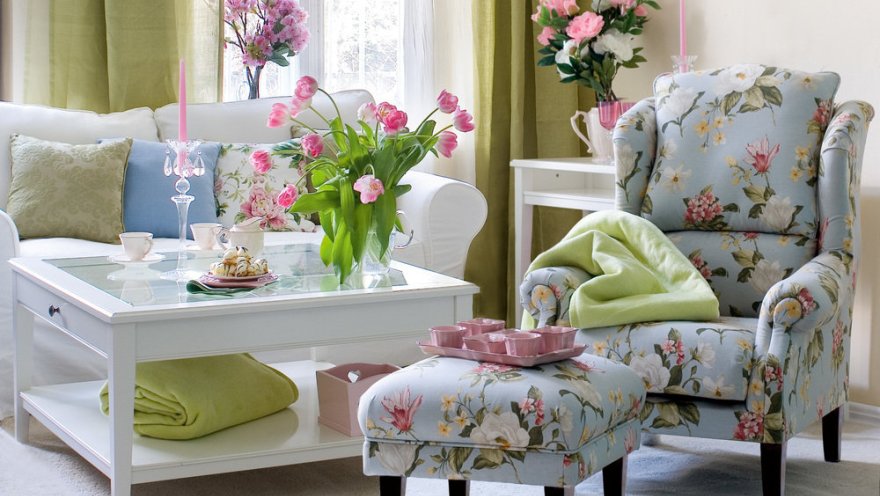
If you need to remove the stain, remember that the detergent must be tested on an invisible area, because different types of upholstery can respond differently to them. Some simply lose their color or are worn out, while on others, the detergent can corrode the fabric, as a result, a break will occur. Therefore, approach the choice of detergents very carefully and be sure to test them on an invisible piece of upholstery.
Very often, caring housewives try to remove the stain as quickly as possible and in a hurry use any detergents that are at hand. Remember, any household chemicals must be used exclusively for its intended purpose. The same detergent for dishes or shower gel can ruin the upholstery of furniture.
When buying upholstered furniture, read the recommendations for upholstery care and regularly keep it clean. Be prepared for the appearance of difficult to remove contaminants and remove them in a suitable manner on time. Then your favorite upholstered furniture will retain its gloss and chic look for a long time.

